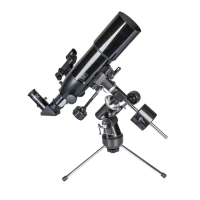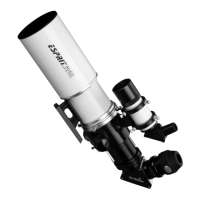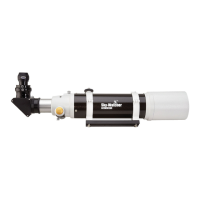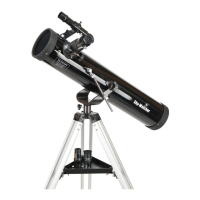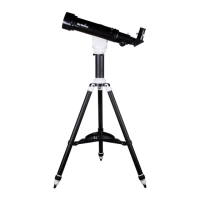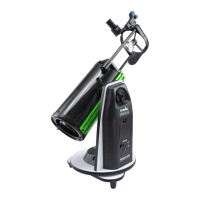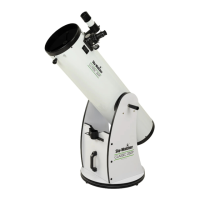18
Pointing to the NCP
For the following examples, it is assumed that
the observing site is in the Northern
Hemisphere. In the first case (Fig.n2), the
optical tube is pointing to the NCP. This is its
probable position following the polar-alignment
step. Since the telescope is pointing parallel to
the polar axis, it still points to the NCP as it is
rotated around that axis counter-clockwise,
(Fig.n1) or clockwise (Fig.n3).
Pointing toward the western or eastern
horizon
Now, consider pointing the telescope to the
western (Fig.o1) or eastern (Fig.o2) horizon. If
the counterweight is pointing North, the
telescope can be swivelled from one horizon
to the other around the Dec axis in an arc that
passes through the NCP (any Dec arc will
pass through the NCP if the mount is
polar-aligned). It can be seen then that if the
optical tube needs to be pointed at an object
north or south of this arc, it has to be also
rotated around the R.A. axis.
Fig.n
1.
2.
3.
Celestial Pole
+
Fig.o
Telescope pointing West
Counterweight pointing North
Telescope pointing East
Counterweight pointing North
+
Celestial
Pole
1.
2.
Rotation of the Dec. axis
Rotation of the R.A. axis

